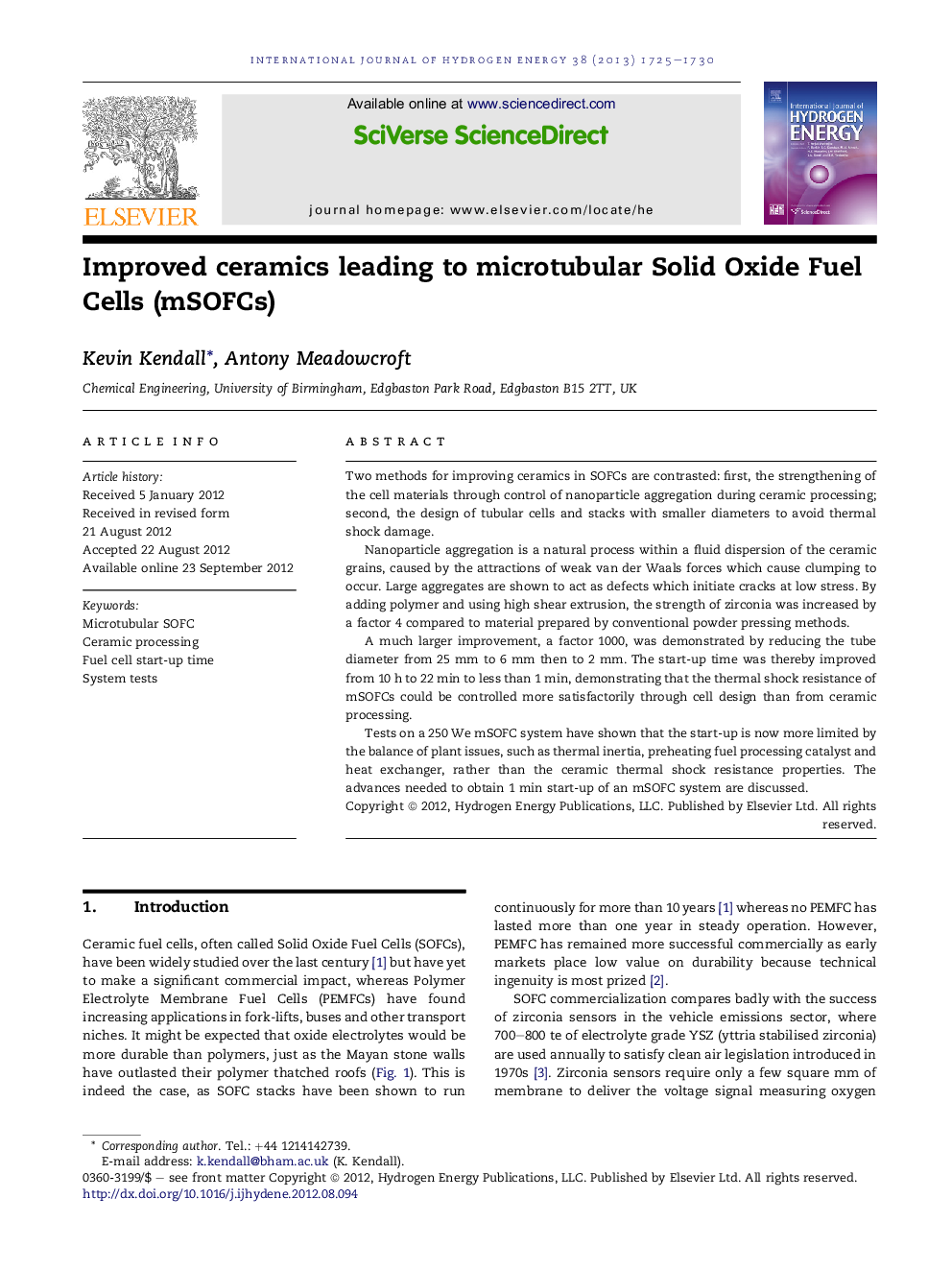| کد مقاله | کد نشریه | سال انتشار | مقاله انگلیسی | نسخه تمام متن |
|---|---|---|---|---|
| 1275961 | 1497542 | 2013 | 6 صفحه PDF | دانلود رایگان |

Two methods for improving ceramics in SOFCs are contrasted: first, the strengthening of the cell materials through control of nanoparticle aggregation during ceramic processing; second, the design of tubular cells and stacks with smaller diameters to avoid thermal shock damage.Nanoparticle aggregation is a natural process within a fluid dispersion of the ceramic grains, caused by the attractions of weak van der Waals forces which cause clumping to occur. Large aggregates are shown to act as defects which initiate cracks at low stress. By adding polymer and using high shear extrusion, the strength of zirconia was increased by a factor 4 compared to material prepared by conventional powder pressing methods.A much larger improvement, a factor 1000, was demonstrated by reducing the tube diameter from 25 mm to 6 mm then to 2 mm. The start-up time was thereby improved from 10 h to 22 min to less than 1 min, demonstrating that the thermal shock resistance of mSOFCs could be controlled more satisfactorily through cell design than from ceramic processing.Tests on a 250 We mSOFC system have shown that the start-up is now more limited by the balance of plant issues, such as thermal inertia, preheating fuel processing catalyst and heat exchanger, rather than the ceramic thermal shock resistance properties. The advances needed to obtain 1 min start-up of an mSOFC system are discussed.
► Shows improvements in SOFCs due to process advances.
► Shows effect of tube diameter on rapid start up; SOFCs starting in 10 s.
► Shows that balance of plant needs to be improved for rapid start of SOFCs.
Journal: International Journal of Hydrogen Energy - Volume 38, Issue 3, 6 February 2013, Pages 1725–1730